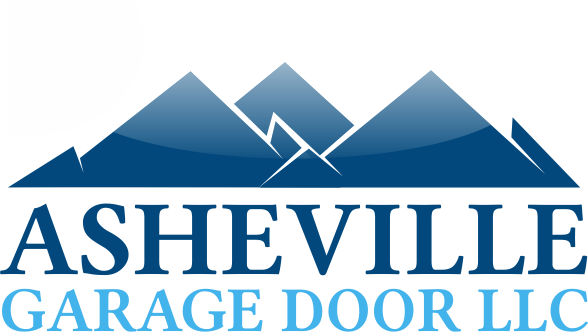Call (828) 255-0830 or fill out a contact form to ask any further questions!
Q. What is headroom?
A. Headroom refers to the distance between the door height and the lowest point of the ceiling or any obstruction such as an opener rail, pipes, or ductwork.
Q. What is backroom?
A. Backroom refers to the distance from the door to the nearest obstruction inside the opening. The door height plus 23″ for 2” track and 25” for 3” track is required for proper door installation. Additional backroom is required for the installation of an automatic door opener.
Q. I do not have standard size door openings. Can Clopay create custom doors to fit my needs?
A. Depending on the door model, doors can be manufactured in 2” increments from 4’2” to 36’2” in width, and from 4’0” to 26’ High. Check with your local dealer or retailer for custom door width/height availability.
Q. How much headroom do I need?
A. It depends on the type of spring and track system that will be installed with your new door. There are many options available to compliment your building. Options such as Follow the Roof, Highlift, Full Vertical track, Spring cycles, Door weights, and track thickness can all impact the amount of clearance required. Standard headroom requirements for a door with torsion springs, 2″ thick track with a 15″ radius require 16″. However, changes will directly affect the clearance needed. It is always best to have a professional dealer look at the opening to determine the best track application and clearance required.
Note: If you are installing a trolley or jackshaft opener, additional headroom or sideroom is required. Check with the opener manufacturer for additional headroom requirements.
Q. I do not have the necessary amount of headroom. Is there something I can do?
A. For more information, refer to the Low Headroom Options file listed in the Installation Manual.
Q. What is side room?
A. Side room refers to the measurement from each side of the door opening, outward to the nearest wall or obstruction within the building. Allow 3-3/4″ on either side of the door for standard wood or masonry jamb and allow 4 ¾” for steel jamb construction.
Q. What type of spring system comes with my door?
A. Professional dealers will install the spring that is best suited for the site conditions. Consult your local dealer or retailer to determine the best type of spring system for your application.
Q. What glass options are available for the full view door models?
A. Tempered glass panels are available in either DSB or insulated. Acrylic windows and aluminum panels are also available. Clopay can accommodate special order glazing requests. Consult your local Clopay dealer or retailer for more information.
Q. My door has a window section. Do I have a choice as to where that section is placed?
A. The window section can be placed in any section on a commercial door. Building codes require that glass within 32” of the bottom of the door be tempered glass.
Q. What tools will I need to install my doors?
-
- “C” Clamps or Locking Pliers
- Hammer
- Screwdrivers
- Tape Measure
- Level
- Socket Wrench Kit
- Combination Open End Wench ¼”
- Impact driver
Q. I am constructing a new building, what size should the rough opening for my door be?
A. Depending on the type of construction, the finished opening should be the same size as the door you wish to purchase. The door fits against the opening from the inside. The rough opening should be finished with an exterior perimeter seal or stop molding to seal out rain and wind. For more information, please refer to the Preparing the Opening file listed on our Installation Manual. Doors mounted to steel jambs are typically ordered 2” wider than the finished opening to allow for side seal application.
Q. I am getting ready to remove my old door, which has standard torsion springs. How can I get the tension off the springs?
A. Unwinding standard torsion springs requires specific tools and training. Due to the dangerous nature of this process, we recommend you contact a local door professional to remove the tension from the springs.
Q. Can I replace just the door sections and not use the new track and springs that came with it?
A. To avoid installation problems that could result in personal injury or property damage, use only the track and springs specified and supplied with your new door. Do not attempt to reuse the old track, springs, or hardware. Failure to use all supplied hardware will void the factory warranty.
Q. Do I need to reinforce my door if I am installing an automatic door opener?
A. Yes! Failure to properly install opener reinforcement will result in damage to the door and will void the warranty. The reinforcement configuration differs depending on the model number and size of the door. Refer to the installation Manual supplied with our doors for specific instructions. For more information, see the “Attaching an Automatic Opener to Pan Construction Doors using Punched Angle” file listed on the Installation Manual or “Attaching an Automatic Opener to Sandwich Construction Doors Using Punched Angle.
Q. My door “hangs” in the opening – is that normal? Can I fix it?
A. Typically doors will hang about 4 to 6 inches into the opening. This helps keep tension on the cable so it does not separate from the cable drum or pulley. If your door operates with an electric opener, it can be adjusted so the door is pulled completely even with the opening if necessary to provide additional clearance.
Q. How do I install my lockset?
A. For lock bars please refer to the “Lock Bar Assembly Instructions” file listed in the Installation Manual. For a cable lock please refer to the “Snap Latch Lock Assembly Instructions” file listed in the Installation Manual.
Q. Does the Clopay door package include everything I need for proper installation?
A. The Clopay door package includes the sections, track, spring assembly and hardware required for door installation. Additional items can be purchased from your local dealer or retailer to aid in the installation:
-
- Track hanger kit for attachment of the horizontal track to the ceiling in the back of the garage. Existing hangers generally can be reused. However, we do recommend that you inspect them to ensure they are in good condition and positioned properly for the new installation.
- Stop molding or perimeter seal for the exterior sides and top of the opening.
- Operator reinforcement can be done with a reinforcement kit or with standard 13-gauge punched angle iron.
Q. How do I install the struts provided with my door?
A. Please refer to the “Installing Struts” section listed in the Installation Manual.
Q. Where can I buy parts?
A. Clopay sells parts exclusively through our distribution network. See the “Where to Buy” section on the Clopay website to find a local dealer in your area or contact us today!
Q. Does my door require maintenance?
A. Your door is the largest moving part on most buildings, and perhaps the hardest working, being raised and lowered an average of six times per day. Like any other area, it needs regular inspections and maintenance. We suggest performing the recommended door maintenance listed in your Installation Manual every 5,000 cycles or an annual basis whichever comes first.
Q. Can I fix my door myself?
A. Clopay doors are built to last, but some parts do occasionally wear out or become damaged. If you are reasonably handy and follow the detailed instructions in the Installation Manual, you can do some repairs yourself. Some of the parts that may require repair include rollers, bottom seal, hinges, lift handles, windows and window inserts. However, we strongly recommend that replacing springs, door sections, tracks and operators be handled by a door professional.
Q. Are replacement sections available for my door?
A. Yes, replacement sections for Clopay doors are available from your local dealer or retailer provided we still manufacture the door model you own. If your door was manufactured in the last ten years, we can identify the model by referencing the 15 to 16 digit serial number located on the interior bottom section of the door. Exposure to the elements can alter the color of a door over time; so the replacement section may not be a perfect match. Consult your local distributor for details.
Q. I hear a lot about R-value. What is it and is it important?
A. R-value is a measurement of thermal efficiency of a door, or how well it insulates. Insulation is an important factor to consider when purchasing a door. If you plan to spend a lot of time in the space, or if you have a room directly above or adjacent to the space, you will want to purchase a door that offers a high R-value. If you are not concerned with insulation, you can purchase a door with a lower R-value or no garage door insulation at all.
R-Value of Clopay Garage Door Models
| DoorType | Thickness | InsulationType | R-Value |
| PremiumSteel | 2” | Intellicore | 18.4 |
| PremiumSteel | 1-3/8” | Intellicore | 12.9 |
| PremiumSteel | 2” | Polystyrene | 9.0 |
| PremiumSteel | 1-3/8” | Polystyrene | 6.5 |
See your local retailer or dealer for specific information.
Q. My doors have no insulation; how can I fix this?
A. Door insulation kits for most of our products are available from your local dealer or retailer.
Q. Can I install my old door opener on my new door?
A. Just about any opener can be installed with new doors; however we recommend checking with the opener manufacturer to find out if the unit meets current government safety standards as required by law. Once verified the unit is in compliance, you can begin the project. Don’t forget to reinforce the door before attaching the opener!
Q. What horsepower opener do I need for my door?
A. The power, voltage and phase of the door operator are based on your current power availability and on the size and weight of the door. Consult your local dealer for guidance for the opener that best suits your needs.
Q. When referring to steel gauge, does a lower number mean thicker steel?
A. Lower steel gauge, the thicker (and stronger) the steel. For example, 24-gauge steel is thicker than 27-gauge steel. However, a “sandwich” constructed door with two 27-gauge steel skins bonded to an insulated core is stronger than a “steel frame” door with a single 24-gauge steel skin.
Q. Can I paint my Clopay door?
A. Clopay’s steel doors can be painted with any high quality exterior latex paint. Do not use oil based paint. Refer to painting instructions in the Installation Manual.
Q. Does Clopay offer reinforced doors for high wind areas?
A. Yes. These doors feature added steel reinforcement struts, upgraded springing and heavy-duty track and rollers to meet wind speeds and gusts from 75 mph to 170 mph. Your local building code authority can provide information on the windload rating required in your county.
Q. I live in Florida and purchased one of your doors with impact windows – how do I clean them?
A. Clopay’s Impact Resistant Windows are made with Polycarbonate. Refer to the WindCode portion of our website for Impact Resistant Window cleaning instructions by clicking here.




